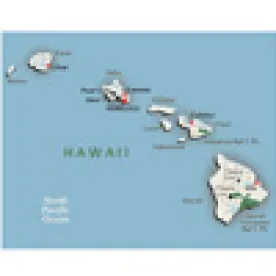In a decision which seems likely to inject yet more uncertainty into whether the introduction of pollutants to surface waters via groundwater triggers the permitting requirements of the Clean Water Act (“CWA”), a majority of United States Supreme Court Justices have determined that the CWA “requires a permit when there is a direct discharge from a point source into navigable waters or when there is the functional equivalent of a direct discharge.”
The County of Maui operates a wastewater treatment plant which injects about 4 million gallons per day of treated wastewater into two injection wells. The wastewater travels a short distance via groundwater before it discharges into the Pacific Ocean. The County of Maui does not have a CWA permit for this discharge and the Ninth Circuit had held that a CWA discharge permit is required because the “pollutants are fairly traceable from the point source to a navigable water.”
In reviewing the Ninth Circuit’s decision in County of Maui, Hawaii v. Hawaii Wildlife Fund et al., the Supreme Court framed the issue at hand as whether the CWA “requires a permit when pollutants originate from a point source but are conveyed to navigable waters by a ‘nonpoint source,’ here, ‘groundwater.’” The majority noted that the Ninth Circuit’s “fairly traceable” standard would invite CWA permitting authority in situations where contaminants travel many miles or years to reach surface water, but that Congress did not intend that CWA jurisdiction be that broad. Instead, Congress left substantial authority over groundwater quality and non-point source pollution to the States. Indeed, the legislative history of the CWA shows that the EPA Administrator at the time the Act was promulgated specifically asked that groundwater be included in EPA’s jurisdiction, but that Congress specifically rejected a proposed amendment to that end.
Rejecting the Ninth Circuit’s “fairly traceable” standard for establishing CWA jurisdiction, the Supreme Court adopted a “functional equivalent” standard that is arguably equally difficult to interpret and apply, if not more so. Perhaps hoping to ameliorate that very result, the majority articulated seven factors which might help determine whether a discharge to surface waters via groundwater is the “functional equivalent” of a direct discharge: (1) transit time, (2) distance traveled, (3) the nature of the material through which the pollutant travels, (4) the extent to which the pollutant is diluted or chemically changed as it travels, (5) the amount of pollutant entering the navigable waters relative to the amount of the pollutant that leaves the point source, (6) the manner by or area in which the pollutant enters the navigable waters, (7) the degree to which the pol¬lution (at that point) has maintained its specific identity.
While the majority observed that “time and distance will be the most important factors in most cases, but not necessarily every case,” the reality is that CWA jurisdiction will now be a multi-faceted, fact based analysis, that may well be more complicated and contentious than it ever was. Indeed the majority appears to have thrown up its collective hands, admitting that it is difficult to “more clearly explain how to deal with middle instances.” The new reality may be that nearly every discharge of contaminants to surface water via groundwater represents a “middle instance” which requires extensive fact-finding and discovery. Thus, summary judgment motions to contest CWA jurisdiction may be a thing of the past.
And as to the probability that CWA permits may now be required for 650,000 injection wells and more than 20 million sep¬tic systems, most of which serve single family residences, the majority, observing that the EPA has been applying CWA permitting to discharges for over 30 years, basically just shrugs its collective shoulders in apparent resignation to that eventuality. In short, this decision promises to invite increased CWA enforcement and permitting in addition to greater numbers of CWA citizen suits which cannot be quickly resolved without protracted litigation and lengthy expert discovery. It promises to be a wild ride.







 />i
/>i
